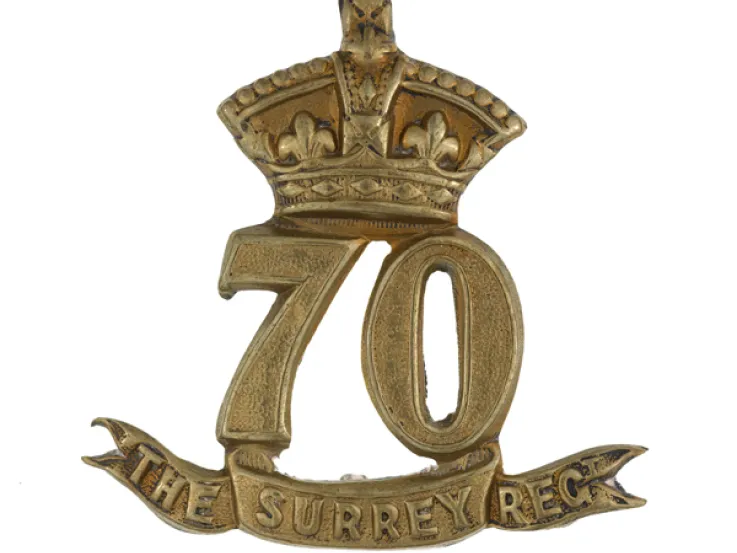Origins
This unit was one of six regiments of marines formed in 1702. Raised in the West Country by Colonel George Villier during the War of the Spanish Succession (1702-13), it helped capture Spanish galleons at Vigo Bay (1702) and assisted in the capture and defence of Gibraltar (1704). The regiment also took part in the sieges of Barcelona (1705) and Toulon (1707).
It was disbanded in 1714, but immediately re-raised as a line infantry regiment, 31st in the order of precedence.
Mid-18th century
The following year, it was deployed to Scotland against the First Jacobite Rebellion (1715). It remained on garrison duty in Ireland and England until it was sent to fight at Dettingen in 1743, early in the War of the Austrian Succession (1740-48). It then suffered heavy losses at Fontenoy and Melle in 1745, before being sent back to Britain.
Short of men, it was unable to participate in the suppression of the Second Jacobite Rebellion (1745-46). It was sent to Glasgow in 1756, where it raised a 2nd Battalion. But two years later, that battalion split off to become the 70th Regiment.
Quiz
Which of the following was a nickname of the 31st Regiment?
At the Battle of Dettingen in 1743, King George II mistook the 31st for the older 3rd Regiment - known as 'The Buffs' - as both units had buff-coloured uniform facings. After being corrected, he is said to have shouted out, 'Then bravo the young Buffs!' And the name stuck.
Late 18th century
The 31st next garrisoned Pensacola in Florida and St Vincent in the Caribbean, both recently captured in the Seven Years War (1756-63). It was then stationed in Britain, Canada and America.
During the American War of Independence (1775-83), it fought at Fort Ticonderoga (1777). But its flank companies were captured at Saratoga (1777). In 1782, the regiment was first given its county association with ‘Huntingdonshire’.
Following a spell of home service, it was sent to the West Indies in 1794, where it helped take Martinique (1794), Guadeloupe (1794) and Saint Lucia (1796) from the French. But in 1797, having lost all but 85 men to yellow fever, it was forced to return home to re-recruit.
The regiment re-deployed to the Low Countries in 1799, fighting at Alkmaar that year. Garrison service on Minorca then followed.
Peninsula
In 1805, a 2nd Battalion was again raised in Ireland. In 1808, this was sent to the Peninsular War (1808-14), fighting at Talavera (1809), Albuera (1811), Vitoria (1813) and Nivelle (1813), before being disbanded in 1814.
1st Battalion had meanwhile suffered heavy losses in the attempt to capture Alexandria (1807). It then briefly returned home, before being shipped to India in 1824. During the voyage out, the regiment lost 54 men, women and children when their transport, the East Indiaman ‘Kent’, caught fire.
Victorian campaigns
The 31st took part in the First Afghan War (1839-42), joining Sir George Pollock’s Army of Retribution that captured Kabul in 1842. It also served in the First Sikh War (1845-46), seeing action at Mudki (1845), Ferozeshah (1845), Aliwal (1846) and Sobraon (1846).
Following further home service, it fought in the Crimea (1854-56) at the Siege of Sevastopol (1854-55).
After garrisoning various points in the Mediterranean, it was sent back to India in 1858. From there, it went to China in 1860, where it fought in the Second China War (1856-60), helping capture the Taku Forts, and against the Taiping Rebellion (1850-64).
Garrison duties in England, Ireland and the Mediterranean followed.
Legacy
In 1881, the 31st Foot was reunited with the 70th (Surrey) Regiment to form The East Surrey Regiment.
Regimental museums
The National Army Museum works with a network of Regimental and Corps Museums across the UK to help preserve and share the history and traditions of the Army and its soldiers.
Discover more about the 31st (Huntingdonshire) Regiment of Foot by visiting Surrey History Centre in Woking.












